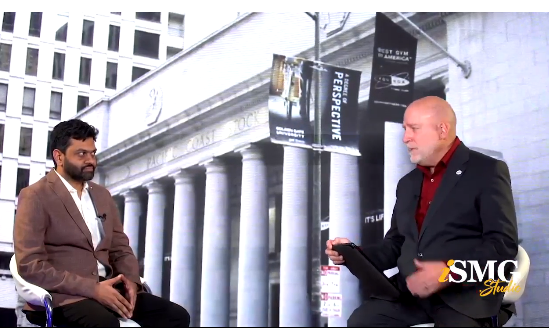Simplifying Technical Concepts for Cybersecurity Videos

Creating engaging cybersecurity videos requires balancing technical accuracy with audience accessibility. Technical jargon and dense explanations can quickly alienate viewers, while clear analogies and relatable language draw them in. Understanding what disengages or captivates an audience, using powerful words, and incorporating a well-prepped journalist or third party can elevate your content.
Leave Density to Whitepapers and Technical PDFs
Dense technical terms without context bore or overwhelm viewers. For example, starting with “We use asymmetric encryption with public/private key pairs to secure data in transit” risks losing non-experts immediately. Other turn-offs include:
-
Overloaded Acronyms: Saying “Our SIEM integrates with IDS/IPS to mitigate APTs” assumes too much prior knowledge.
-
Data Dumps: Reciting stats like “73% of breaches involve phishing” without a story feels flat.
-
Monotone Delivery: A single speaker droning on without variation lacks energy.
-
Abstract Concepts: Discussing “zero-trust architecture” without grounding it in real-world scenarios confuses viewers.
Audiences Engage with Storytelling, Visuals, and Balanced Energy
Hook viewers by making cybersecurity relatable and urgent. Start with a vivid scenario: “Imagine a hacker slipping into your email because of one weak password.” Use analogies to simplify, like comparing asymmetric encryption to “a locked mailbox—anyone can drop in a letter, but only the person with the key can open it.” Other engagement tactics include:
-
Storytelling: Share a brief case study, like a small business recovering from a ransomware attack.
-
Visuals: Show a simple graphic of data flowing through a “secure tunnel” instead of explaining SSL/TLS.
-
Relevance: Tie concepts to daily life, like comparing strong passwords to locking your front door.
-
Energy and Pacing: Use dynamic tone shifts and short, punchy sentences to maintain attention.
Discover related ISMG content on this topic
The mission was clear but daunting: convince five intimidating cybersecurity professionals to create marketing videos. This was a no-nonsense group—bald, muscular, and covered in military tattoos that told stories of intense service. Now, they were consultants at a Big Four cyber risk management practice.
“Our work is boring,” one growled. “Nobody wants to watch what we do.”
Another chimed in, “Video is a waste of time. We’re about technical substance, not flashy content.”
I was outnumbered, slightly terrified—but determined to change their minds. [Continued]
Examples of Powerful Words and Statements for Cybersecurity Videos
Words that evoke emotion or action keep viewers engaged. Use:
-
Urgent Verbs: “Protect,” “secure,” “defend,” or “stop” convey importance (e.g., “Defend your data with one simple step”).
-
Relatable Phrases: “Your personal info is a hacker’s treasure” makes stakes clear.
-
Empowering Language: “Take control of your security” inspires action.
-
Simple Calls to Action: “Start with a strong password today” feels achievable. Avoid jargon-heavy phrases like “leverage multi-factor authentication”; instead, say “add an extra lock to your account.”
Get Access to World-Class Journalists or Credible Third Parties
A journalist or third-party interviewer can balance your energy and ground the conversation. They act as the audience’s advocate, asking clarifying questions like “What does encryption actually do for me?” A prepped journalist knows enough to avoid basic errors but remains relatable, preventing the discussion from becoming too technical. They can steer you back if you dive into jargon, ensuring the content stays accessible. For example, when you mention “end-to-end encryption,” they might prompt, “So, it’s like a secret code only the sender and receiver understand?” This dynamic keeps the tone conversational, builds trust, and makes complex topics digestible.

FAQs About Simplifying Technical Cybersecurity Concepts for Video
By avoiding jargon, using analogies, choosing powerful words, and leveraging a third party, your cybersecurity videos can captivate and educate diverse audiences effectively. But there’s a lot more detail involved in producing an engaging and memorable cybersecurity video!
As the world’s top experts in cybersecurity video production and distribution (over 20 years of experience, including the very early days of YouTube!) here are some of the most frequently asked questions ISMG.Studio producers have been asked. We are live at the world’s top cybersecurity events and conferences.
-
Why does storytelling prevent viewers from tuning out cybersecurity videos?
Stories make technical jargon relatable. Instead of explaining “asymmetric encryption,” tell a story about a spy sending a coded message only the recipient can unlock, keeping viewers hooked. -
How can a story make encryption engaging?
Frame encryption as a “secret diary with a lock.” Share a tale of a business protecting customer data from hackers, showing how encryption acts like a unique key only the owner holds. -
What’s a storytelling analogy for firewalls?
Describe a firewall as a castle gatekeeper, only allowing trusted knights (data) inside. Tell a story of a company fending off a cyberattack, with the firewall as the hero. -
What words enhance cybersecurity storytelling?
Use vivid verbs like “shield,” “guard,” or “outsmart” and phrases like “your data’s safe haven.” For example, “Guard your accounts like a fortress” feels more compelling than technical terms. -
How do visuals support cybersecurity stories?
Pair a story about a hacker with visuals of a “digital vault” being locked. Animations showing data dodging traps (threats) make the narrative vivid and memorable. -
Why are real-world stories effective in cybersecurity videos?
A story about a small business recovering from a ransomware attack feels urgent and relatable. It shows real stakes, like lost revenue, making viewers care about prevention. -
How does a journalist enhance cybersecurity storytelling?
A journalist acts as the audience’s guide, asking, “How did the company survive the hack?” Their questions prompt you to weave technical details into a compelling narrative. -
How can phishing be explained through a story?
Tell a tale of an employee tricked by a fake “bank email” stealing their login. Compare phishing to a con artist posing as a friend, making the threat clear and relatable. -
How can stats be woven into cybersecurity stories?
Instead of saying “73% of breaches involve phishing,” tell a story of a company hit by a phishing scam, then note how common these attacks are to emphasize urgency. -
What’s a storytelling call to action?
End with a narrative push: “Be the hero of your data’s story—start with a strong password today.” It’s motivating and ties the viewer’s action to the story’s resolution. -
How can I start a cybersecurity video with a story?
Open with a relatable scenario: “Picture a hacker sneaking into your email because of a weak password.” This sets up a narrative that draws viewers in before explaining solutions. -
What makes a cybersecurity story memorable?
Use emotional stakes, like a family business losing savings to a hack. Vivid characters (e.g., the “sneaky hacker”) and a clear resolution (e.g., adopting two-factor authentication) stick with viewers. -
How do I simplify malware through storytelling?
Compare malware to a “digital virus” sneaking into your device. Tell a story of a student’s laptop crashing from a shady download, then explain antivirus software as the cure. -
Can humor work in cybersecurity storytelling?
Light humor, like describing a hacker as a “digital pickpocket,” keeps stories engaging. Avoid overdoing it—focus on relatable humor that doesn’t trivialize the threat. -
How do I use customer stories in videos?
Share a real (or anonymized) customer’s experience, like a retailer thwarting a data breach with strong passwords. It builds trust and shows practical solutions in action. -
How can I make technical updates part of a story?
Frame updates as “arming your defenses.” Tell a story of a company avoiding a hack by updating software, showing how a simple action saved the day. -
What’s a good story for explaining VPNs?
Describe a VPN as a “secret tunnel” for your data. Share a tale of a remote worker safely accessing company files from a coffee shop, protected from prying eyes. -
How do I keep cybersecurity stories concise?
Focus on one key moment: a single hack attempt, a quick recovery, or one preventive action. Keep the story under a minute to maintain attention while delivering the point. -
How can I use metaphors for complex threats like DDoS attacks?
Compare a DDoS attack to a “traffic jam flooding a website.” Tell a story of an online store overwhelmed by fake traffic, then saved by a cloud-based defense system. -
How do I end a cybersecurity story effectively?
Conclude with a clear win: “The company outsmarted the hacker with a simple backup.” Tie it to an actionable step, like “Back up your data today to write your own happy ending.”